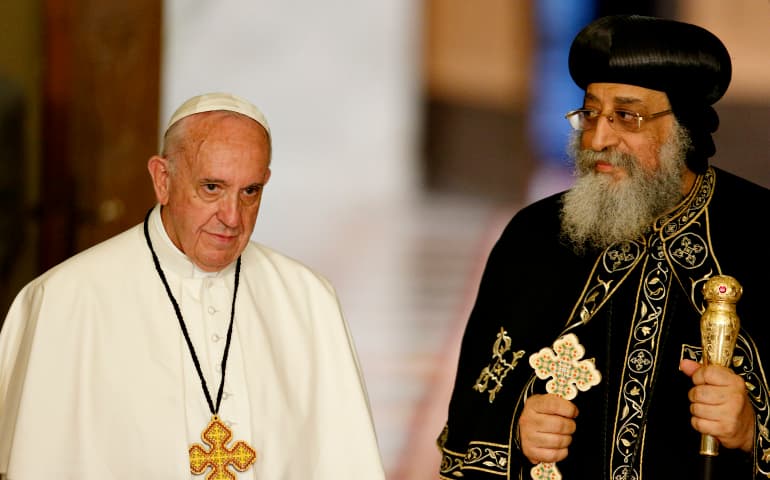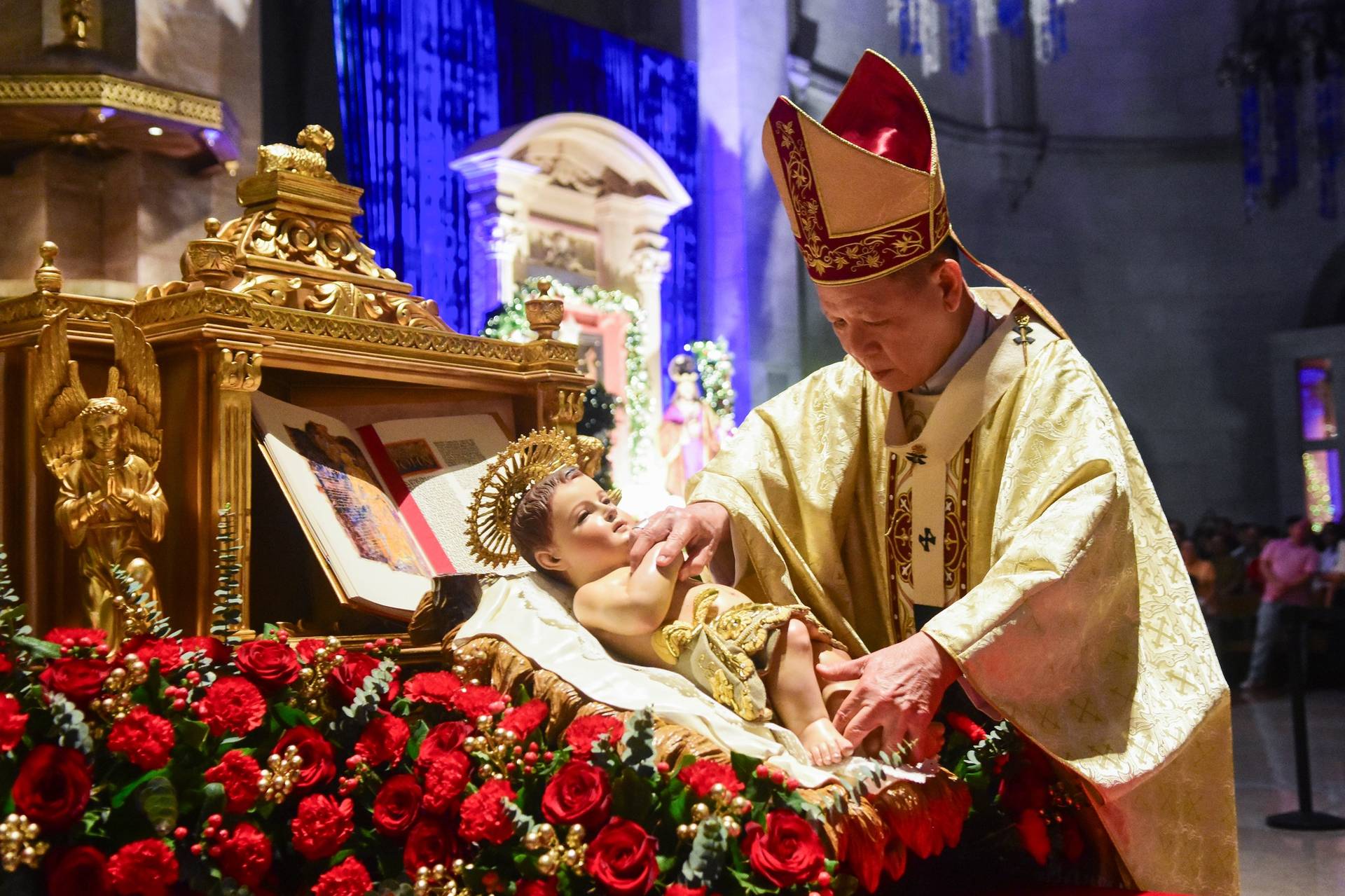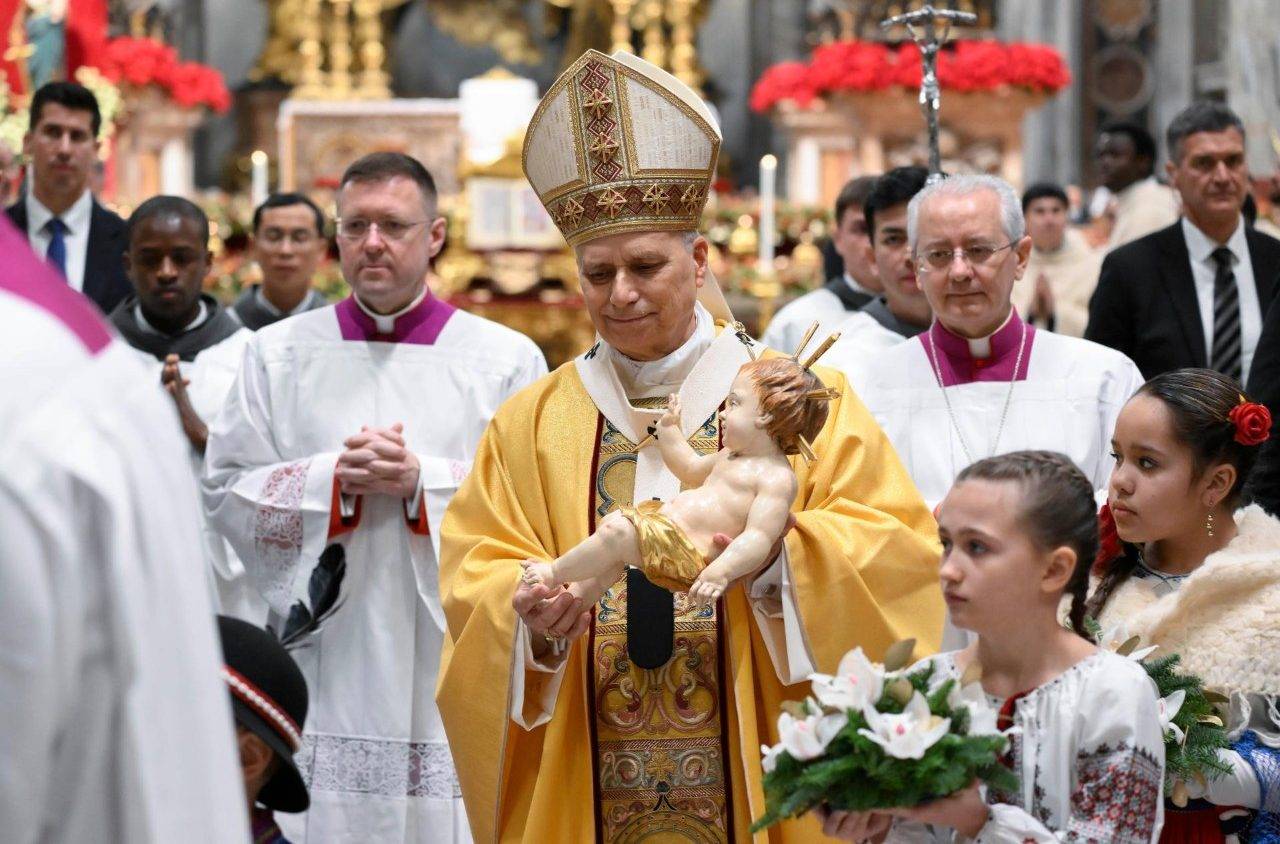ROME – This week there will again be “two popes” at the Vatican when Francis meets his Coptic Orthodox counterpart, Pope Tawadros II, who is visiting in a bid to strengthen relations with the Catholic Church and bolster support for Christians in the Middle East.
A statement from the Vatican Monday said Tawadros, head of the Coptic Orthodox Church of Alexandria, will be in Rome on May 10 and 11 to celebrate the 50th anniversary of the “historic” first meeting between the Catholic and Coptic Orthodox popes.
That meeting took place in May 1973 when Pope Saint Paul VI welcomed Coptic Orthodox Pope Shenouda III to the Vatican, where the two signed a joint declaration outlining their shared beliefs.
According to the Vatican statement, Tawadros will participate in Pope Francis’s Wednesday general audience on May 10, and the following day he will hold a private meeting with Francis before visiting the offices of the Vatican’s Dicastery for the Promotion of Christian Unity.
Tawadros will then meet with Coptic Orthodox faithful living in Rome and will celebrate a Eucharistic liturgy for them Thursday evening in the papal Basilica of St. John Lateran.
Based in Egypt, the Coptic Orthodox Church, also known as the Coptic Orthodox Patriarchate of Alexandria, is an eastern Orthodox Christian which, in addition to serving its faithful in Egypt, also has a strong presence in Africa and the Middle East.
The church traces its founding to the Apostle Mark, hailed as one of the four Evangelists in Catholicism and who is buried in St. Mark’s cathedral in Venice.
Christians in Egypt make up an estimated 10 percent of the country’s population of 109 million, and of those, the vast majority are Coptic Orthodox. They constitute not only the largest population of Christians in Egypt, but in the Middle East as a whole.
Outside of Egypt, they reside mainly in Sudan and Libya, with small communities in Israel, Cyprus, Jordan, Lebanon and Tunisia.
The first-ever meeting between a Catholic pope and a Coptic Orthodox patriarch of Egypt took place May 10, 1973, when Pope Paul VI and Coptic Pope Shenouda III signed a historic Christological declaration, initiating a bilateral ecumenical dialogue between the two churches that continues to this day.
Prior to the meeting, Paul VI in 1968 had made a point of returning several of St. Mark’s relics to Egypt’s Orthodox Copts, having received a request to do so by Patriarch Cyril VI for the commemoration of the 1900th anniversary of St. Mark’s martyrdom.
The relics were reportedly stolen and brought to Venice in 828. The fragments returned by Paul VI were placed in an altar built for the occasion and are still present there to this day.
In the joint declaration signed by Paul VI and Shenouda III, gratitude was voiced for the return of the relics, and several shared beliefs between the two churches were highlighted, including faith in Jesus as full God and full man, the seven sacraments, veneration of the Virgin Mary and the saints, the church as founded by the apostles, and the importance of ecumenism.
The two also pledged to overcome differences and established a joint working commission to study theology, history, and modes of cooperation.
A second meeting between a pope and Coptic Patriarch took place when Shenouda III met with Pope John Paul II in Cairo in February 2000, during the Polish Pope’s pilgrimage for the Great Jubilee held that year.
The most recent meeting, forty years after the 1973 meeting, was held May 10, 2013, when the newly-elected Pope Francis met with the also newly-elected Pope Tawadros II in Rome, making their meeting this week the second encounter between the two.
Francis traveled to Cairo in 2017, where he met with the country’s top Muslim authority, the Grand Imam of Al-Azhar, and paid a courtesy visit to Tawadros.
In their statement, the Vatican noted that the Coptic Orthodox Church of Egypt “is one of the most important realities in the ecclesial panorama of the Middle East, where, in recent times, the Christian communities have found themselves having to face situations of great difficulty.”
Coptic Christians in Egypt and the Middle East have often been the victims of violent persecution against the Christian community, and Pope Francis has repeatedly sent messages to Tawadros voicing sorrow and sympathy.
Perhaps the most gruesome example was the horrifying video released by the Islamic State group in 2015, which showed militants beheading 21 men dressed in orange prison jumpsuits and wearing handcuffs. Of the 21 men killed on that occasion, 20 were Coptic Christians, and one was a Ghanian Christian, all of whom prayed to Jesus as they were killed.
The bodies of the men were finally recovered in October 2017, after one of the perpetrators was caught by Libyan authorities and disclosed the location of the remains, which were repatriated to Egypt in May of that year. Upon arrival, the plane carrying the remains was met by Tawadros.
Previously, some 28 Copts were killed during the “Maspero Massacre” in 2011, when Egypt’s army and security forces attacked one of their demonstrations.
They have continued to face violent persecution in Egypt and beyond, joining the many other Christians in the Middle East and elsewhere who form part of what Pope Francis has often called an “ecumenism of blood,” in which no distinction is made between Christian communities targeted by extremists.
Ecumenism has been a major pillar of Pope Francis’s 10-year reign, as he has made a point of visiting several majority-Orthodox nations and has consistently prioritized outreach to the leaders of other Christian churches.
Francis has also consistently sought to provide comfort and support to Christians facing persecution, not only through statements, but also through travel, with his 2017 visit to Egypt and his historic trip to Iraq in March 2021.
His meeting with Tawadros this week, then, is a continuation of his push to further the cause of Christian unity and to support beleaguered Christians in the Middle East at a time when they continue to be victims of violent attacks.
Follow Elise Ann Allen on Twitter: @eliseannallen















